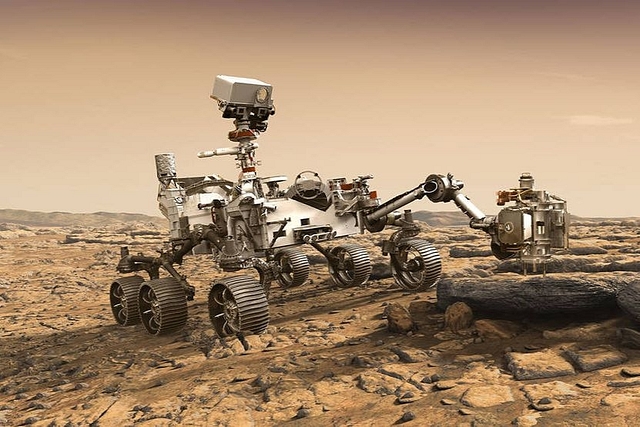
NASA’s Perseverance Rover Extracts Breathable Oxygen From Thin Martian Air
In a major achievement, NASA on Tuesday (20 April) converted carbon dioxide from the thin Martian atmosphere into pure, breathable oxygen, reports Economic Times.
The unprecedented development was achieved by an experimental device aboard the six-wheeled science rover Perseverance. Notably, Perseverance had landed on the Martian soil on 18 February this year, seven months after being launched from Earth.
The development was made public via the official Twitter handle of NASA’s perseverance rover, which stated, “Another huge first: converting CO2 into oxygen on Mars. Working off the land with what’s already here, my MOXIE instrument has shown it can be done!
Future explorers will need to generate oxygen for rocket fuel and for breathing on the Red Planet. ”
As per NASA, the instrument in discussion is named MOXIE, short for Mars Oxygen In-Situ Resource Utilization Experiment, which works through electrolysis utilizing extreme heat to separate oxygen atoms from molecules of carbon dioxide.
Notably, Mars’ atmosphere is only about 1 per cent as dense as Earth's and Carbon dioxide accounts for about 95 percent of its composition. The remaining 5 per cent of Mars' atmosphere consists primarily of molecular nitrogen and argon.
In its first activation, the toaster-size instrument MOXIE produced about 5 grams of oxygen, equivalent to roughly 10 minutes' worth of breathing for an astronaut.
The feat marked the first experimental extraction of natural resources from the environment of another planet for direct use by humans.
Trudy Kortes, director of technology demonstrations within NASA's Space Technology Mission Directorate, called it the first technology of its kind to help future missions "live off the land" of another planet.
As per the statement by NASA, “While the technology demonstration is just getting started, it could pave the way for science fiction to become science fact – isolating and storing oxygen on Mars to help power rockets that could lift astronauts off the planet’s surface. Such devices also might one day provide breathable air for astronauts themselves.”